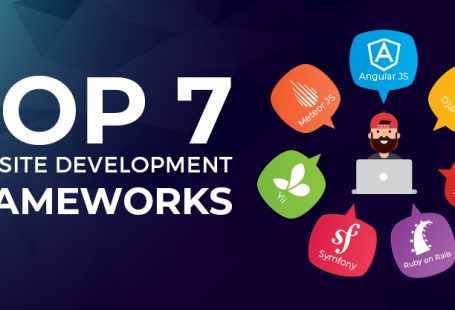There has always been underlying speculation regarding the popularity of WordPress. How does it fare when compared to other Content Management Systems like Drupal and Joomla? It is a million dollar question indeed.
That speculation has certainly been laid to rest now. According to various surveys conducted by W3Techs, WordPress is now powering 32% websites on the internet, including the ones that are not based on a CMS. If we take only young websites into consideration, this number increases to 35.5%.
The other Content Management Systems (around 400) are nowhere close to this number. If we talk about CMS market, WordPress shares 59.5% of the pie. In fact, WP has received W3Techs’ CMS of the year award for the 8th time in a row.
Now let’s address an important question – Does that 32% include too many small and low-traffic websites?
To answer that question, we need to break up the market share of WP. BuiltWith is a popular source that projects market share for various websites, using Quantcast measurement. Through a list like Quantcast Top 10k, it put together 10,000 websites that enjoy very heavy traffic.
Let’s see how WordPress fares in Quantcast analytics:
- If we talk about Quantcast Top 10k, WordPress has a market share of 35.04%.
- If we talk about Quantcast Top 100k, WordPress has a market share of 33.83%.
The above stats certainly clear the picture. WordPress is not powering just another website, and it’s actually powering the creamy layer.
The next question in line is – Is the market share of WordPress still on the rise or has it become stagnant?
The market share of WordPress has witnessed consistent growth. The rate of growth has roughly been the same for the past couple of years. Let’s visualize this growth in numbers. At the beginning of 2017, WordPress was powering around 27% of all websites. Fast forward to October 2018, that number has risen to 32%.
These numbers are fascinating, knowing that WordPress has its own set of drawbacks. Some of them are slow speed, vulnerability (read less secure), and limited scalability.
That said, these drawbacks should not be seen as dead ends. The performance of your WP website can be enhanced. You just need to know the reasons behind such anomalies.
Let’s address the issue of slow speed first.
So what exactly slows down a WP website?
The primary causes for a slow WP website are:
- Improperly configured hosting server
- WP configuration
- Bad plugins
- Page Size
- External scripts
The performance of your WP website largely depends on the hosting service. For example, if you opt for shared hosting, you share the server with other customers. So if one of the customer’s website gets heavy traffic, then your website is likely to slow down. The server won’t have enough bandwidth to offer.
Using a dedicated or specialized WP hosting service can drastically improve this situation. Such hosting services manage all the technical aspects of running a WP site. These aspects include speed, updates, backups, uptime, and scalability. Needless to say, your website’s performance is greatly optimized. Such hosting services also provide advanced security configurations to make your site impregnable.
How Can CDN Help In This?
A website’s loading time varies with geographical location as well. Whether your website is built using WP or not, it doesn’t really change this fact. It’s all due to the location of your web hosting server. For example, if the hosting server is located in the US, then a visitor situated in the US would experience a faster loading time than the one located in India. To untangle this situation, you can use a Content Delivery Network (CDN).
CDN is a network of servers covering the entire world. Each server stores ‘Static’ files such as images, CSS, and JavaScript, unlike WordPress pages that are ’dynamic’ in nature. So if someone visits your website, the closest server can serve the static files. This way CDN can lessen the workload of your web hosting server.
Security is another concern that circles around a WP website.
WP is an open source platform, which makes its code vulnerable to humans, bots, or botnets. In fact, a vulnerability which was deciphered in 2017 led to the advent of WordPress 4.7.2. It was done to secure the WP sites against SQL injections. It’s true that in the case of WP, the site owner needs to be extra cautious. The outdated WP elements are the most vulnerable. So it’s important to ensure that WP core, themes, and plugins are up-to-date.
One of the most prevalent hacking methods is SQL Injection
As WordPress executes server-side scripts, it becomes exposed to malicious URLs. SQL Injection refers to such attacks, where hostile URLs target the database. It triggers an anomalous behavior that dishes out sensitive information to hackers, thereby letting them easily manipulate your site.
To insulate your website from such attacks, you can define strict rules in your .htaccess file in Apache. By doing that, the URL requests will be screened thoroughly, and many of the malicious URLs will be taken care of.
Sensitive files being highly accessible is another concern
Installation and wp-config files are sensitive in nature. At times they are left too exposed to malicious intents. One way to insulate such files is by disabling the directory browsing. You just need to add a single line of code in your WordPress site’s .htaccess file. Make sure you enable your FTP client so that you can see the hidden files.
Now it’s time to answer a series of important questions, like – How come WP dominates a huge chunk of CMS market? How come it powers so many popular websites? What actually makes it stand out?
WordPress is not just your regular CMS, and it’s evolution personified. There is a thriving ecosystem that exists around it, thanks to its open-source nature. So what exactly the term ecosystem means in the context of WordPress?
It means that there are established workflows that are cyclic in nature. In other words, an ecosystem sustains an infinite loop, so that there is always a novice and an accomplished developer existing at the same time. So that there is always a basic and an advanced functionality or plugin existing at the same time.
This makes sure that every consumer, having a different degree of requirement, benefits. This perfectly blends functionalities, producers (developers and contributors), and consumers, to realize a space of constant learning. This eventually results in a user-friendly and contemporary product.
The existence of such an ecosystem is what puts WP head and shoulders above its competitors like Drupal and Joomla.
Without an ecosystem of the same vastness, it will be difficult for them to coexist. Sooner or later WP will cover the entire market.
Let’s Take Some Examples
The downfall of Blackberry is a classic example to understand this. The launch of iPhone along with the thriving ecosystem of Apple, triggered this downfall. Blackberry was overly protective of its core functionalities and didn’t create an open space where outsiders could contribute. This is why they couldn’t keep up with consumers’ evolving tastes. By the time they realized their diversion from the consumer market, Blackberry had become an outdated QWERTY keyboard device.
Now let’s jump back to WP’s ecosystem. There are thousands of developers and core contributors, that continuously work towards making WP a state-of-the-art CMS. Over the past 10 years or so, a huge WordPress community has come to the fore, that has attracted more developers to join the bandwagon.
So who are Core Contributors? What has been their role in making WordPress so popular?
Well, they are nothing but developers who regularly update WordPress. They keep an eye on security-related threats, streamline the codebase, and enrich WordPress with exciting features.
Similarly, there are plugin and theme contributors. They create add-ons that enhance the usability of WordPress and later release them for public use.
Most of the developers (read contributors) who create commercial themes, release them without charging a dime. Many developers contribute plugins in their spare time too. All this leads to a thriving community, as contributors are very cohesive and learn from each other. This is also the reason why the learning curve of WP doesn’t remain that steep.
Needless to say, anything which is easier to learn, will always have more takers. Same goes with WordPress.
The discussion about WP’s ecosystem remains incomplete if we don’t mention about 50,000 plugins that integrate with WP. Many of such plugins provide basic functionalities such as SEO, caching, just to name a few.
But more importantly, there are certain plugins that work in the capacity of a stand-alone CMS. They provide advanced functionalities generally associated with a CMS.
We have curated some of these plugins for you, by tracking their usage, via tools like Google Analytics and Jetpack.
1. WooCommerce
It’s the best e-commerce plugin for WordPress. Around 12% of websites that are based on WordPress, use WooCommerce. In general, it used by 4.3 % websites on the internet. This is a significant number, as it makes WooCommerce more popular than standalone eCommerce systems such as Magneto, Shopify, and PrestaShop.
The plugin is the right fit for small to large scale online merchants. It integrates seamlessly with WP and gives complete control to store owners as well as developers.
The plugin powers more than 30% of all online stores, which is a huge number. It allows users to display product variations, achieve multiple configurations, and sell affiliate goods from online marketplaces.
2. Web-Dorado Photo Gallery
Websites that are based on Content Management Systems, 0.7% of them uses Web-Dorado Photo Gallery. In general, it is used by 0.4% of websites on the internet.
It’s a highly responsive plugin, offering numerous functionalities. The plugin lets you add countless images to your website/blog. It lets you add interactive elements and different gallery styles to your website. Using its eCommerce add-on, you can sell your digital images using payment systems like Stripe or Paypal.
3. BuddyPress
Websites that are based on Content Management Systems, 0.4% of them uses BuddyPress. In general, it is used by 0.2% of websites on the internet.
It’s an exciting plugin developed by WP’s contributors. It’s an open source plugin which when integrated with WordPress, turns the website into a social network platform. It is primarily used by niche communities to establish a thriving communication or interaction platform.
With BuddyPress installed, visitors can create user profiles on your site, chat with other users, create groups, among other things which build your social network.
Another factor which separates WP from the rest is its cost-effectiveness
Though in order to derive cost-effectiveness from WordPress, you need a stroke of luck. With so many themes and plugins available, as we mentioned earlier, the probability of finding an appropriate theme for your business is very high. You just need to keep looking.
Although WordPress has reached such a milestone, it’s still a work in progress. It will keep evolving, and we are sure that some of the most progressive websites of the future will have WordPress written all over them.



